Quantum Mirror
Words Sean Stillmaker
As much as social media is a liberator from structural hierarchies and an accessible connector to global communities, it also possesses addictive neurotransmitters that could send us on perilous downward spirals or leave us isolated in echo chambers.
“I look at social media as a tool to navigate us; we cracked the code to be able to write it, but now it cracked our code to be able to write us, in so many ways,” says artist Adrian Stein.
Our conversation is naturally plugged into social media’s impact as it’s personified and refracted in Adrian’s immersive art installation, Quantum Mirror — a massive undertaking, his largest feat yet, that was a whirlwind to finish over the last 36 hours, much of which he has not slept yet, but not an ounce of that exhaustion is visible in our exchange.
“How many times have we found ourselves going to social media — even when I have no time to kill my attention, my reaction is now to go to social media; it’s my tick. Now I’m swiping on Instagram and now I’m 2 minutes deep into the swipe and it’s like, ‘wow, this machine has mined my brain for attention,’” he says. “The feed is like literally feeding people; it’s their brain food.”
Filtering through Adrian’s Instagram feed were body image related content. Outside of his social media, Adrian was looking at the geometry of toroid structures and German magnetic vortexes. So when the opportunity came along to brainstorm on an art installation, it was natural to combine these two permeating influences.
“To represent the body digitally and to be in this body image obsessed culture, especially with social media,” he says, “I take that very metaphorically.”
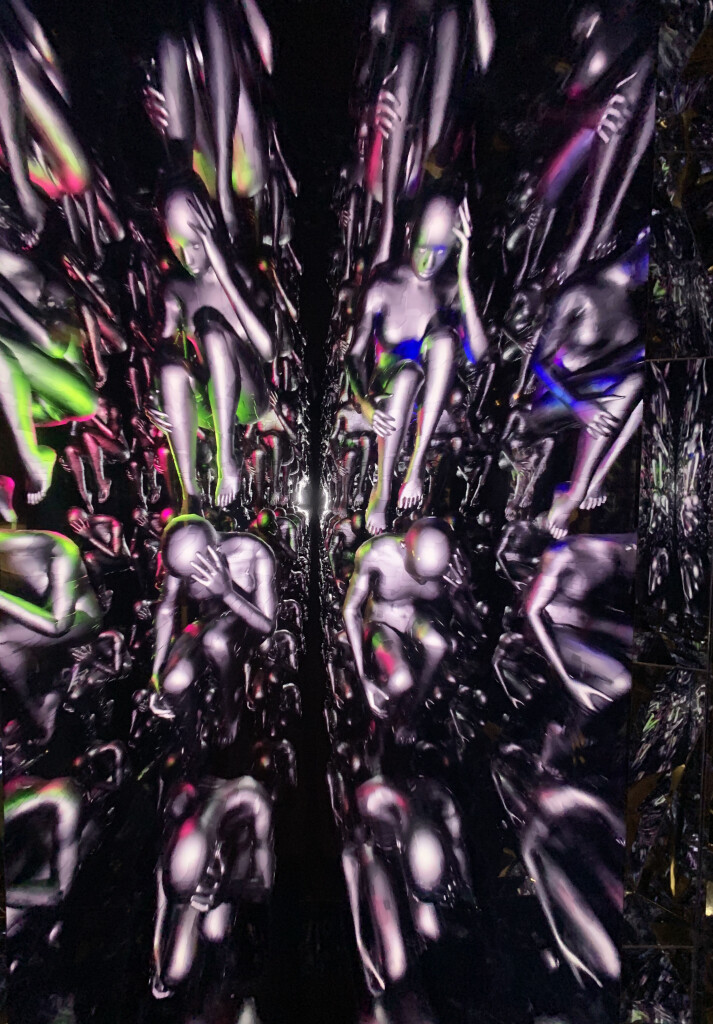
Quantum Mirror culminated into a 300-square-foot chamber-like installation that one can walk through with over 150 mirrored surfaces projecting Stein’s digital animations with an eerie soundtrack that he quips is “the temple of the internet.” The kaleidoscopic array of juxtapositions has us internally reflect our relationship between the digital and physical worlds, as well as literally reflect ourselves — so we can get that unique shot for Instagram.
The video animation he created is a neon fluorescent loop of bodies and geometric movements, reminiscent of the continuous social media scrolling where bodies converge to just textures of people. Synthesized through this immersive installation, there’s a convergence that is palpable to his initial guiding question: “borderline between raw human consciousness and cyborg consciousness, what does this place look like?”
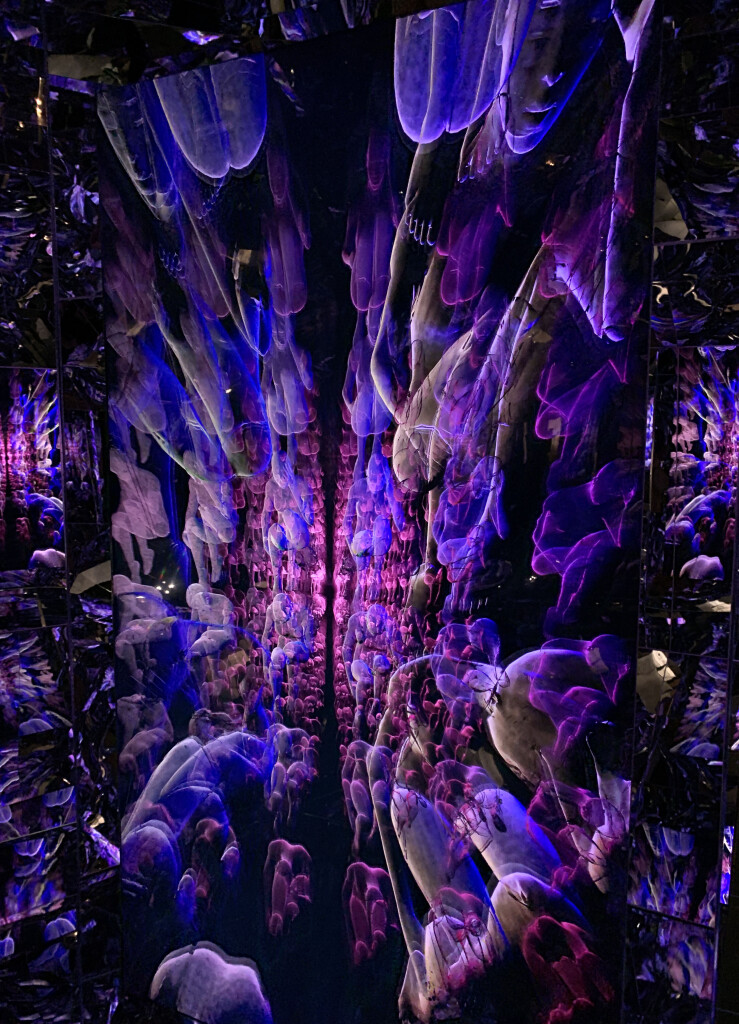
To finally answer this question with the installation, there were earlier questions he had to answer himself. A Guatemalan native, Adrian arrived to Chicago on a scholarship to the School of the Art Institute Chicago, but a career path as an artist was not something immediately embraced by his family.
“We look northwards to the US to become doctors, engineers, politicians, etc… these are all title roles in my family,” Adrian says. “It was purely through social media and one art teacher in high school [where art began] clawing at my soul, it was speaking to me.”
Social media enabled him to connect with community and collaborators, but as well as provide a distribution platform for his work that otherwise could have remained stagnant through conventional institutional art.
But soon enough, Adrian began to lose sight on his pursuit of craft and enabling dialogues. “Then I found myself two years ago being like — post every day, post every 3 hours; you got to keep the feed constant; you’re not growing if you’re not getting your numbers up,” he recalls. “The soul of my art reduced itself a lot, which is what I was trying to escape before.”
The Covid-19 pandemic created a silver lining for Adrian where all distractions were eliminated and he himself limited his social media. It was in these moments where he began “making for the right reasons.” Whether it was drawing, painting, animating, whatever artistic whim of the day, he created.
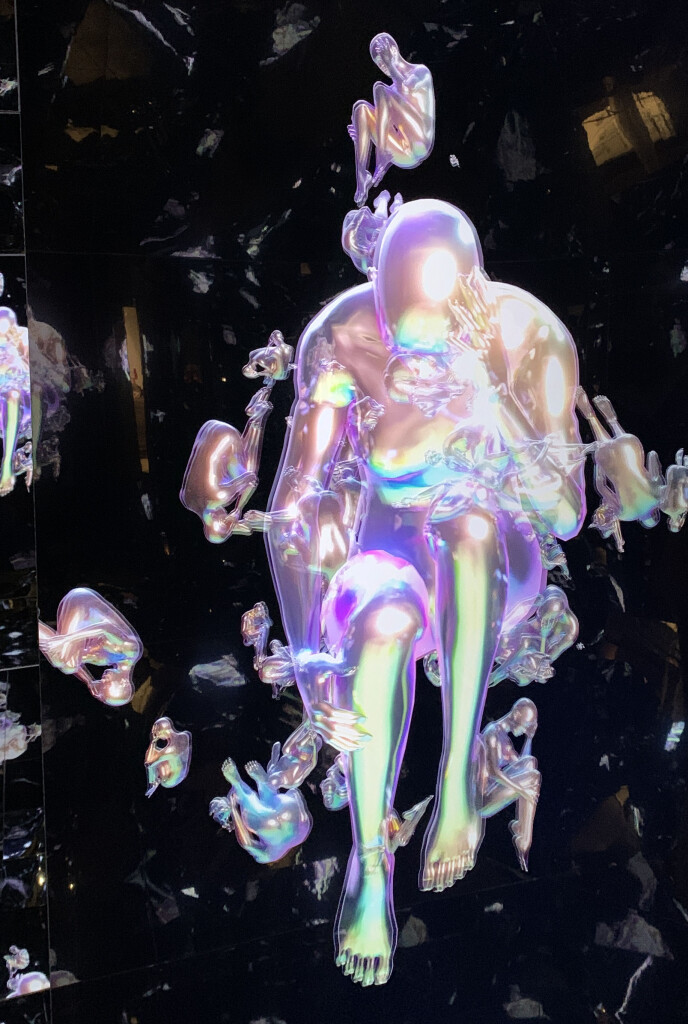
It was during this period he connected with Fidel Rodriquez of ArtSpace8 and laid the groundwork to bring Quantum Mirror to life. Integral to the project, Adrian’s collaborators were Patrick Soper creating music and Zac Hall his producer. Patrick had the remit of creating a sound that is the ‘temple of the internet,’ whereas Zac, “took care of so many things that my bandwidth could not do,” Adrian says.
To get the physical installation together, they had one more real-world challenge that none could have foreseen — snow. Throughout the month of February, Chicago was hit with blizzard after blizzard, accumulating 21.6 inches for the month (well above the average 10-in), which ranks 9th snowiest in its history.
The delivery of the mirrors was delayed by a week and a half, Adrian recalls, despite plea attempts with the driver to meet halfway to retrieve the load. Nevertheless, in the zero-hour it all came through and Quantum Mirror was ready to transcend into reality opening ArtSpace8 back after lockdown.
Related Reading




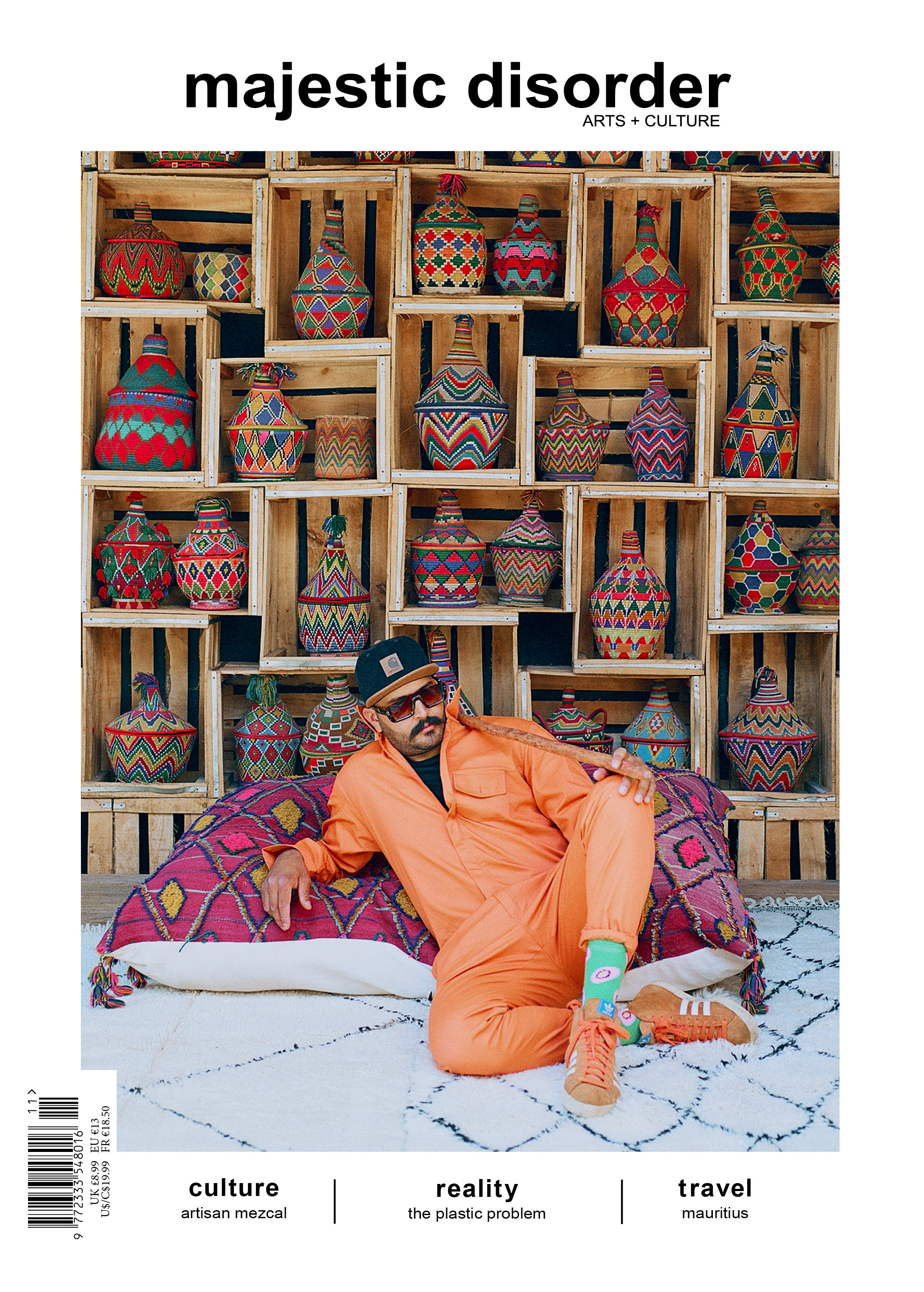
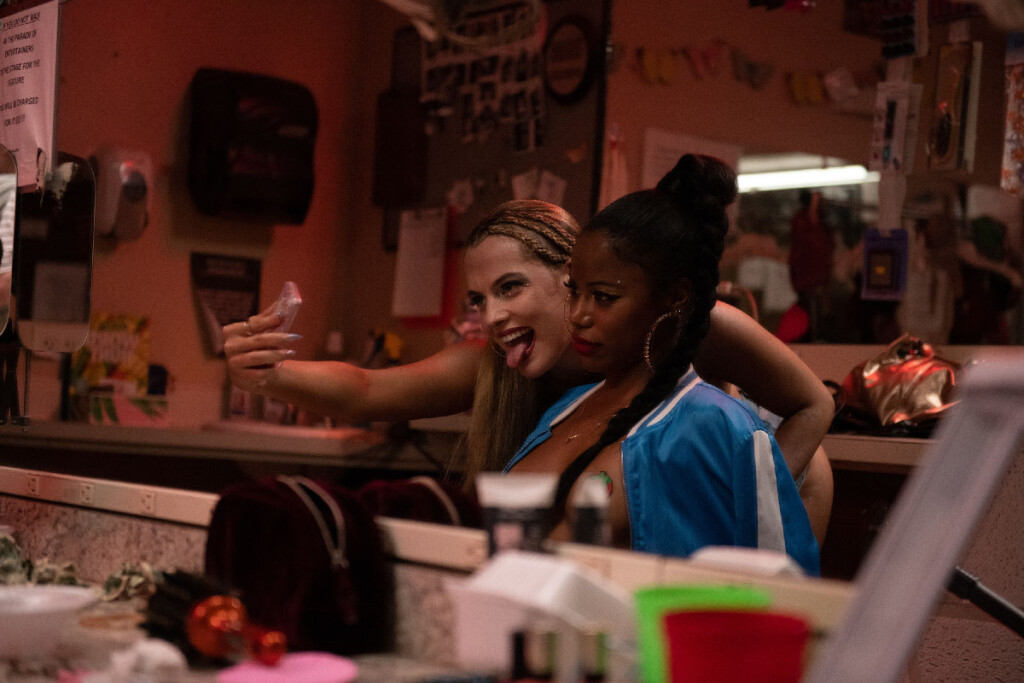
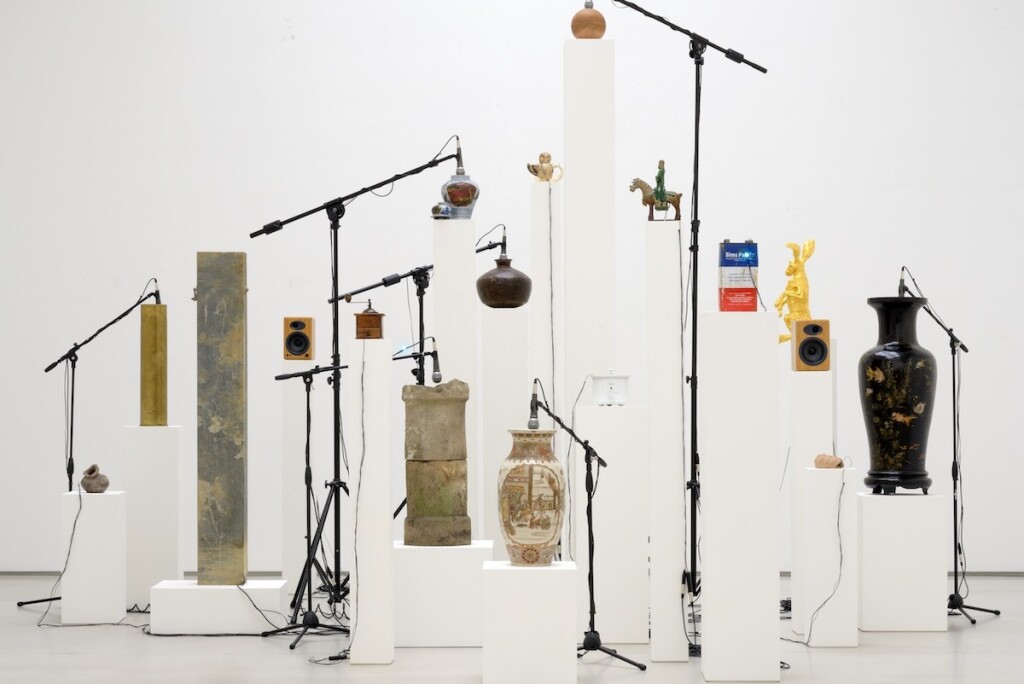
 @majesticdisorder
@majesticdisorder